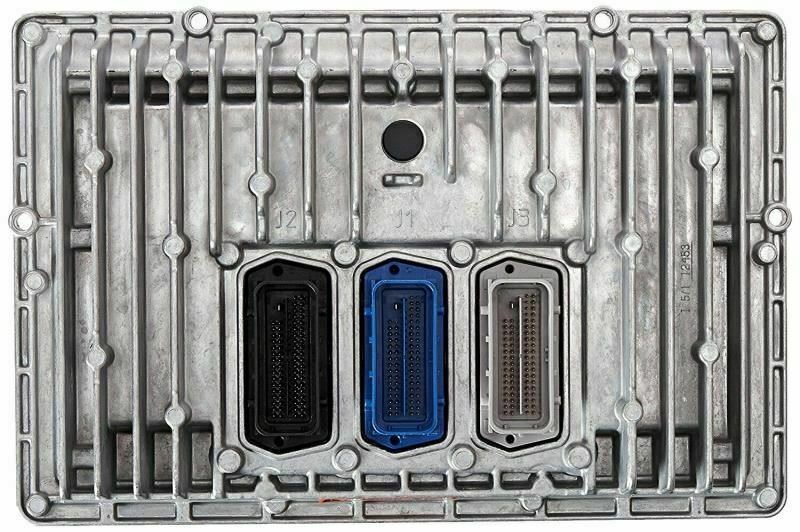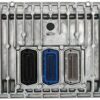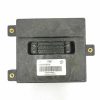Is Your 6.6L Duramax Running Rough?
A failing Engine Control Module (ECM) can be the source of some of the most frustrating and difficult-to-diagnose issues in your 2013-2014 GM HD truck. If you’re experiencing problems like a no-start condition, intermittent stalling, poor fuel economy, or a dashboard lit up with warning lights, the ECM, the brain of your engine, could be the culprit. This genuine, used GM Engine Control Module, part number 12654088, is the reliable and cost-effective solution to get your truck back on the road and running strong.
The Critical Role of the ECM in Your Truck
The ECM is responsible for managing nearly every aspect of your 6.6L Duramax engine’s performance. It constantly analyzes data from dozens of sensors—monitoring everything from crankshaft position and throttle input to exhaust gas temperature and fuel rail pressure. It uses this information to precisely control fuel injection timing, turbocharger vane position, and emissions systems. When the ECM fails, this complex symphony of operations falls apart, leading to a wide range of performance issues. Replacing a faulty module is not just about fixing a problem; it’s about restoring the precision engineering that makes your Duramax powerful and efficient.
From the Diagnostic Bay
We had a 2014 Sierra 3500 towed in that was a real head-scratcher. The truck would crank but wouldn’t start, and the owner had already replaced the fuel filter and checked for fuel pressure. Our initial scan showed a host of communication error codes (U-codes) with various modules. We could barely establish a stable connection with the engine computer. After verifying the power and ground circuits to the ECM were solid, we connected a known-good module. The truck fired up on the first try. The original ECM had an internal short that was corrupting the entire vehicle communication network, preventing the security system from authorizing engine start. It’s a classic example of how a single faulty module can create a diagnostic nightmare.
Why a VIN-Programmed Module is Essential
You can’t simply swap an ECM from one truck to another. Each module is programmed with vehicle-specific information, including the Vehicle Identification Number (VIN), injector flow rates, and operating parameters for the specific options your truck was built with. Our service eliminates the guesswork and the expensive trip to the dealership. Before we ship your part, we flash it with the latest official GM software updates and program it specifically to your truck’s VIN. This ensures that it functions exactly as the original did, maintaining all factory performance and emissions standards. This is the key to a successful repair for your 2013-2014 Silverado 2500 ECM.
Common Symptoms of a Failing ECM
- ✔ Check Engine Light: A persistent check engine light, especially with communication-related codes (U-codes) or internal processor fault codes (P06xx).
- ✔ No-Start or Hard Starting: The engine cranks but refuses to start, or takes an excessively long time to fire up.
- ✔ Engine Stalling: The engine may stall unexpectedly while driving or at an idle for no apparent reason.
- ✔ Poor Performance & Fuel Economy: A noticeable drop in power, hesitation during acceleration, and a significant decrease in miles per gallon.
- ✔ Transmission & Shifting Issues: The ECM communicates with the Transmission Control Module (TCM), and a fault can cause harsh shifting or incorrect gear selection.
- ✔ Scan Tool Communication Failure: Your mechanic may be unable to communicate with the engine computer using a diagnostic scan tool.
Installation and Required Relearn Procedures
Once you receive your pre-programmed ECM, the physical installation is straightforward. It is typically located in the left front of the engine compartment. However, after installation, the vehicle will not start until a Vehicle Theft Deterrent (VTD) relearn is performed. This is a mandatory security procedure that syncs the new ECM with your truck’s ignition and anti-theft system. This procedure requires a high-level scan tool or access to GM’s TIS2Web service. Additionally, other procedures like a crankshaft position variation relearn or injector flow rate programming may be necessary depending on your specific vehicle. Please ensure you or your mechanic have the capability to perform these essential final steps.
Frequently Asked Questions
How do I provide my VIN for programming?
After you complete your purchase, you will need to send us your 17-digit Vehicle Identification Number (VIN). You can typically add this in the notes section at checkout or send it to us in a message referencing your order number. We cannot ship the part until we have this information.
What is a ‘theft relearn’ and can I do it myself?
A theft relearn is a security procedure that pairs the new ECM to your vehicle’s Body Control Module and ignition key. Without it, the truck’s anti-theft system will prevent the engine from starting. This procedure requires a professional-grade scan tool or GM’s specific software (TIS2Web). It is not a procedure that can be done without the proper equipment.
Is this a new part?
No, this is a high-quality, tested, used part sourced from a salvaged vehicle. Each unit is inspected and verified to be fully functional before being programmed and shipped. This provides a reliable, factory component at a significant saving compared to a new part from a dealer.
Will this ECM fix my truck’s problem for sure?
This part will correct issues directly caused by a faulty ECM. While the symptoms listed are very common for ECM failure, they can also be caused by other issues like bad sensors or wiring problems. Proper vehicle diagnostics are always recommended before ordering to confirm the ECM is the point of failure.
Does this part fit other vehicles?
Yes, this ECM (part number 12654088, also fits service number 12653319) is compatible with several 2013-2014 GM models equipped with the 6.6L Duramax engine, including the Sierra 2500/3500, Express vans, and Savana vans. Please verify the part number and check the detailed fitment list on this page to ensure compatibility.


